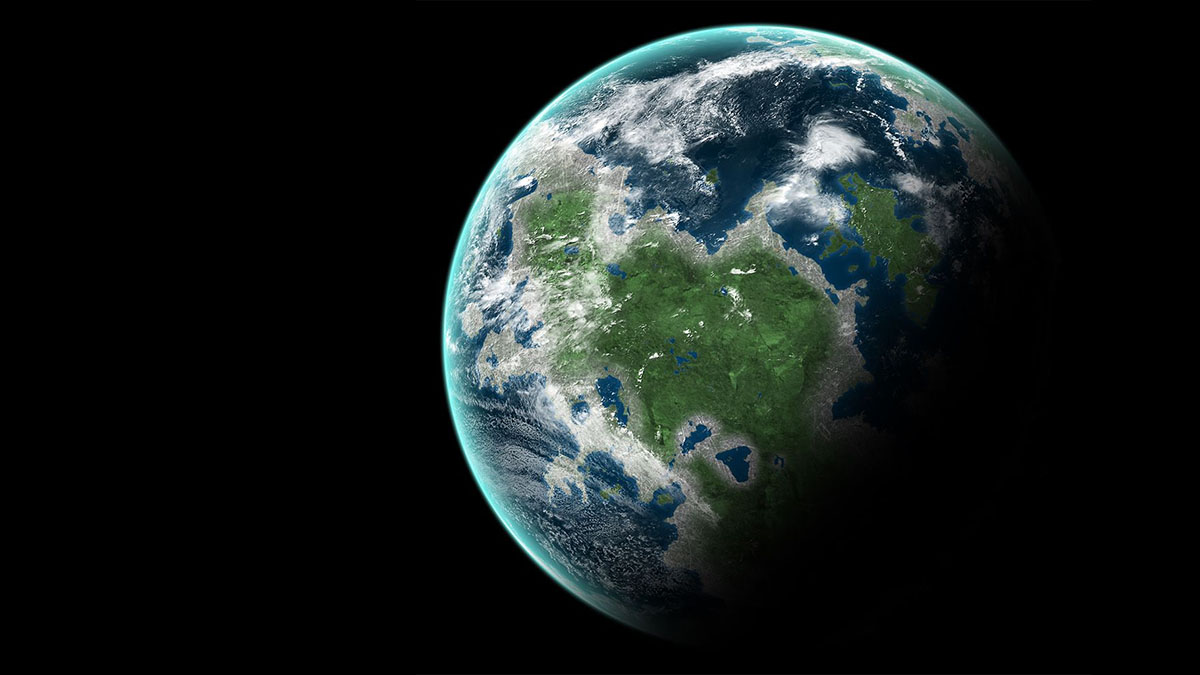the search for alien water hits on gliese 581g

So it may be tidally locked and the temperatures around the equator might be hot enough to fry something as the night side is encrusted in ice that never melts, but Gliese 581g is our strongest candidate for liquid water outside our solar system, and potentially, for alien life forms. A while ago, I wrote about the potential for liquid water and life on two other planets in the same solar system because both worlds were just on the edge of a belt somewhat misleadingly referred to as the habitable zone, an area around a star that should be warm enough for oceans and seas to exist without any required assistance from a planet’s atmosphere. Too close to the star, and too much water turns into vapor, causing a runaway greenhouse effect like on Venus. Too far, and too much water becomes ice, though if we want to get technical, a thick layer of ice might not snuff out all liquid water or life. This is why the best candidate for alien life in our solar system is the icy moon Europa.
So how do we actually confirm if Gliese 581g has liquid water? Well, a few big enough telescopes should do the trick. If we build an orbital telescope that could resolve an extrasolar world in enough detail, astronomers could check the alien world’s spectral lines and look for the telltale signs of water on its surface. Of course in trying to find water on a tidally locked planet, we may face a few unusual challenges. Since 581g only shows one face to its parent star, we can pretty much guarantee that the dark side will be chained in ice and it would probably be too cold for anything but the toughest bacteria with the slowest metabolism to survive there. We’d need to catch the day side at the right moment to get potentially good data, most likely where a perpetual day turns into constant night, creating relatively mild, comfortable temperatures, and strong gusts due to a sharp temperature change between the hemispheres. And if we do detect liquid water, this will give us the evidence that life does have a chance to arise on an extrasolar planet, and seeing how 581g orbits a red dwarf, it could enjoy a very long and stable life, orbiting its sun billions and billions of years after ours dies.
Now I know what you may be thinking. Liquid water, plus habitable environments, plus time should equal the kind of intelligent life we may be interested in trying to investigate. And it would be only 20 light years away so at some point in the future, we could conceivably reach it, right? Well, let’s keep in mind that evolution is not a guarantee of intelligence and there are some serious timescale issues to consider before we start to plan ay trips to introduce ourselves to the Glieseans. Considering the planet’s rather extreme climates, it may be a lot more likely that we’ll find small animals, plants, and lots of microbes, which would be tremendous, made for Nobel prizes treasure trove for biologists and chemists, but hardy the ET many of us want to find. Still, until we actually were to land on the planet’s surface and find out for ourselves, all we’ll have will be guesses and high hopes based on data from telescopes, and there may be some kind of intelligence evolving on 581g as we speak, an intelligent species our hopefully space-faring offspring may one day meet…





